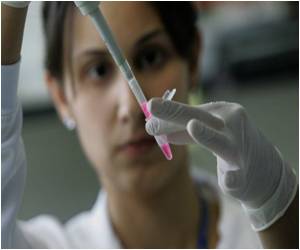Most neurodegenerative diseases that are characterized by misfolded proteins, such as Alzheimer's, Parkinson's and Huntington's diseases can now be dealt with a series of molecules.

This novel and revolutionary approach was published online today in the Journal of Molecular Biology. The publication, "A bacteriophage capsid protein provides a general amyloid interaction motif (GAIM) that binds and remodels misfolded protein assemblies," was authored by Rajaraman Krishnan et al.
"Symptoms of neurodegenerative diseases often appear well after the troublesome aggregates have begun to accumulate in the brain. By then, therapies that only target newly forming aggregates are likely to only slow the progression of the disease and are believed to be too late once the aggregates are formed," said Dr. Gregory A. Petsko, Professor of Neurology at Weill Cornell Medical College in New York City, and Tauber Professor of Biochemistry and Chemistry, Emeritus, at Brandeis University in Waltham, Massachusetts. "Therapies based on GAIM would represent a completely new paradigm in the treatment of many neurodegenerative diseases with their potential to ameliorate existing symptoms and prevent disease progression. The hope is this will eventually lead to a real treatment for Alzheimer's disease, but for now, the science behind it is quite compelling."
Researchers used an array of techniques, including X-ray fiber diffraction and nuclear magnetic resonance spectroscopy, to demonstrate the activities of GAIM. They discovered that GAIM effectively binds to multiple types of misfolded proteins during their formation in such a way that prevents new toxic protein aggregates from forming. In addition, upon incubating GAIM with various misfolded proteins, the researchers observed that GAIM disrupted these assemblies of misfolded proteins by causing a conformational change in their structures. This structural change could enable the body's natural disposal mechanism to recognize and clear the misfolded proteins, which in theory, would enable the brain to return to a more normal state. The ability to destabilize pre-existing aggregates of multiple types of misfolded proteins is unique in the field.
The discovery of GAIM has led to the creation of NeuroPhage's lead candidate, NPT088, which is the GAIM motif fused to a portion of a human antibody. The result is a potential therapeutic that can be easily delivered to patients. NeuroPhage has accumulated extensive preclinical data on this candidate, demonstrating its efficacy across disease models of Alzheimer's, Parkinson's and related diseases characterized by aggregation of the tau protein. NeuroPhage expects that NPT088 will be ready for human studies in late 2015.
"With recent advances in imaging agents for beta-amyloid and tau in Alzheimer's disease, we believe we should be able to demonstrate clinical proof of mechanism in a Phase 1b study with NPT088," said Jonathan Solomon, CEO at NeuroPhage. "If successful, we would then have the opportunity to pursue many therapeutic options in several neurodegenerative diseases of protein aggregation."
Advertisement
Source-Eurekalert












